1lumen selects and reviews products personally. We may earn affiliate commissions through our links, which help support our testing.
Lumintop D1 review
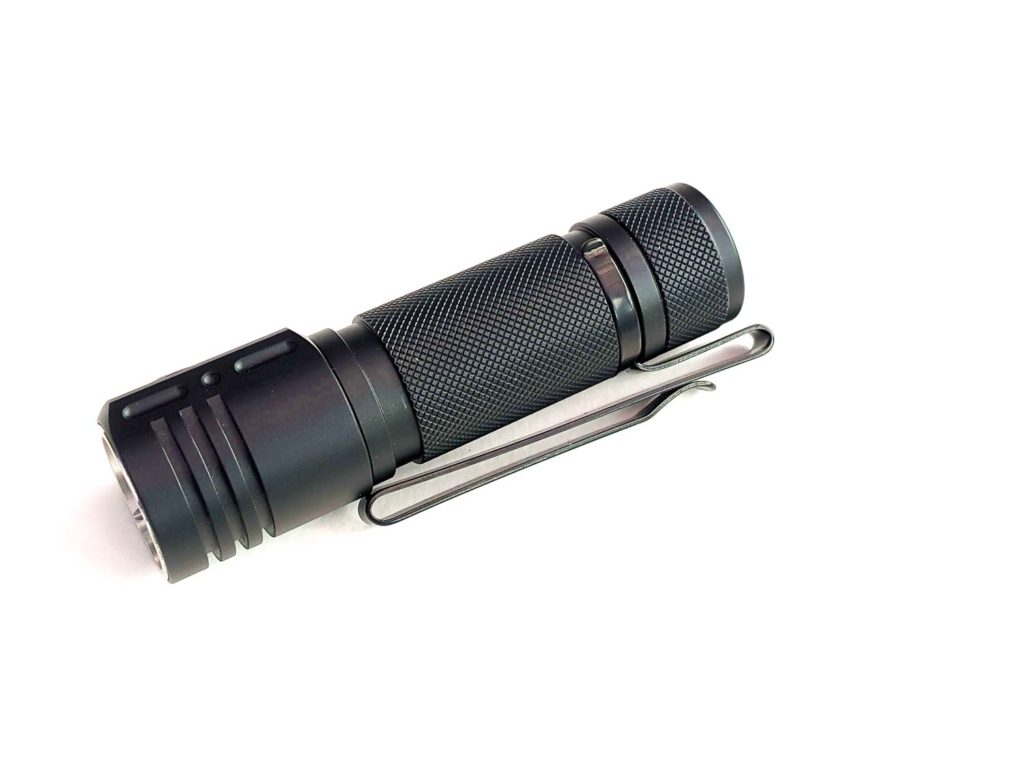
Lumintop D1 specifications
| Brand/model | Lumintop D1 |
|---|---|
| LED | 3 * XP-G3 / XPL-HI / Nichia 219C |
| Lumens | 2,000 lm |
| Beam intensity | 8100 cd / 180 m |
| Battery config. | 1*18650 |
| Material | Aluminum |
| Modes | 5 |
| Blinkies | none |
| Reflector | TIR optics |
| Waterproof | IPX8 |
| Review date | May 2021 |
Introduction:
Here we have the Lumintop EDC18 for review. Oops, sorry, I mean the Lumintop D1. As far as looks go, the only difference you’ll spot is the clip. The EDC18 and D1 may look the same but they certainly don’t act the same.
The EDC18 runs Anduril, which although being intuitive once you get used to it, can be off-putting to some people as the interface has so many (wonderful) options. My guess is that Lumintop wanted something simpler that would sell better to people who don’t call themselves flashlight enthusiasts. I’ve also seen a Lumintop EDC18L for sale, which seems to be in between the D1 and EDC18.
I don’t have an EDC18 to compare it to but I have an Emisar D4V2, which sets the bar very high for 18650 TIR lights.
Package quality.
The D1 comes in Lumintop’s standard printed cardboard box, with foam insert.
There was a glow diffuser included in the box but it looks like this isn’t included by default in the standard package. Lumintop sells the diffuser for less than $2.
- Lumintop D1
- Pocket clip (2-way)
- Glow diffuser
- Pink glow gasket
- 2 spare O-rings
- Split ring
- Lanyard
- Manual
- reversible clip (new)
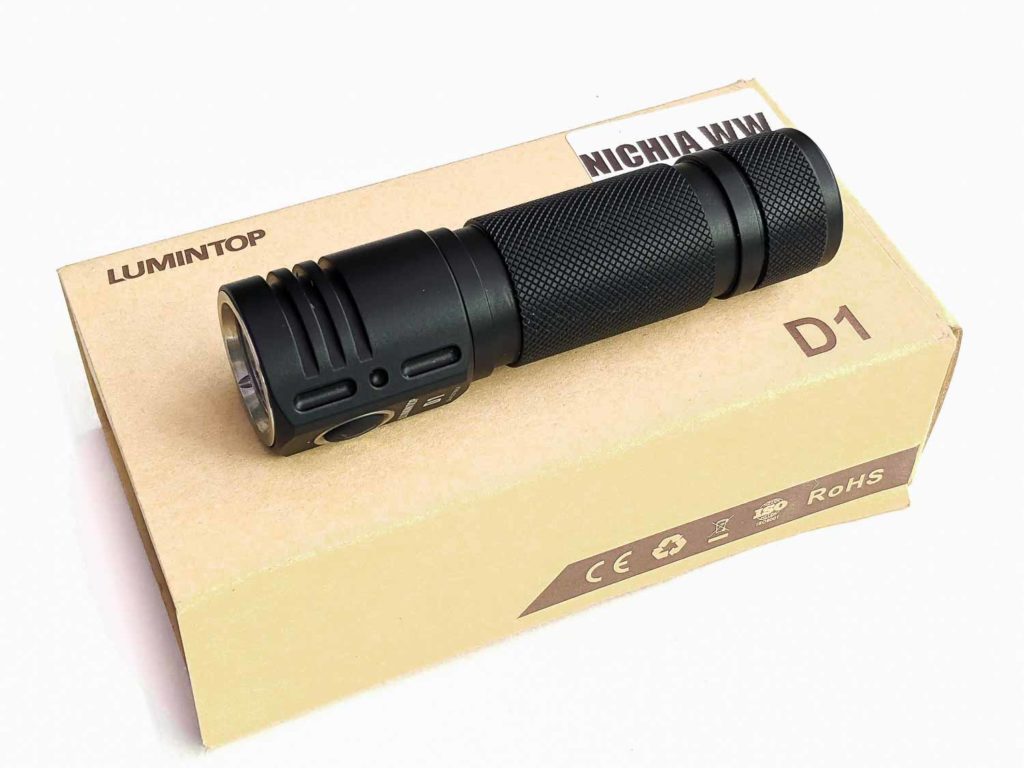
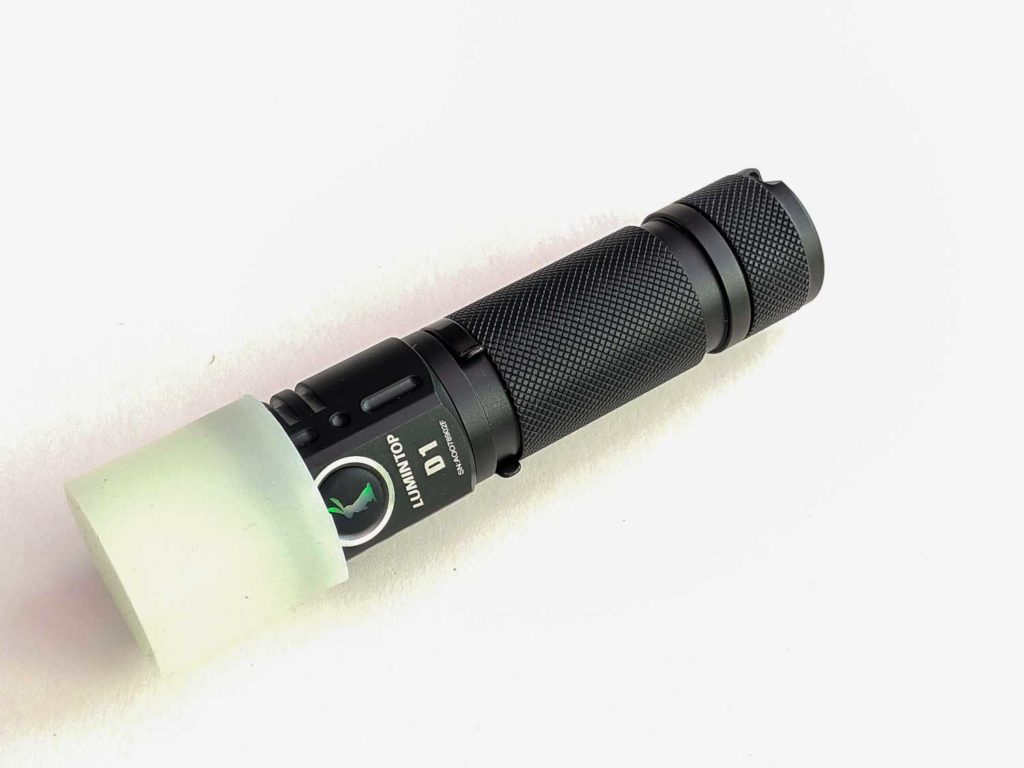
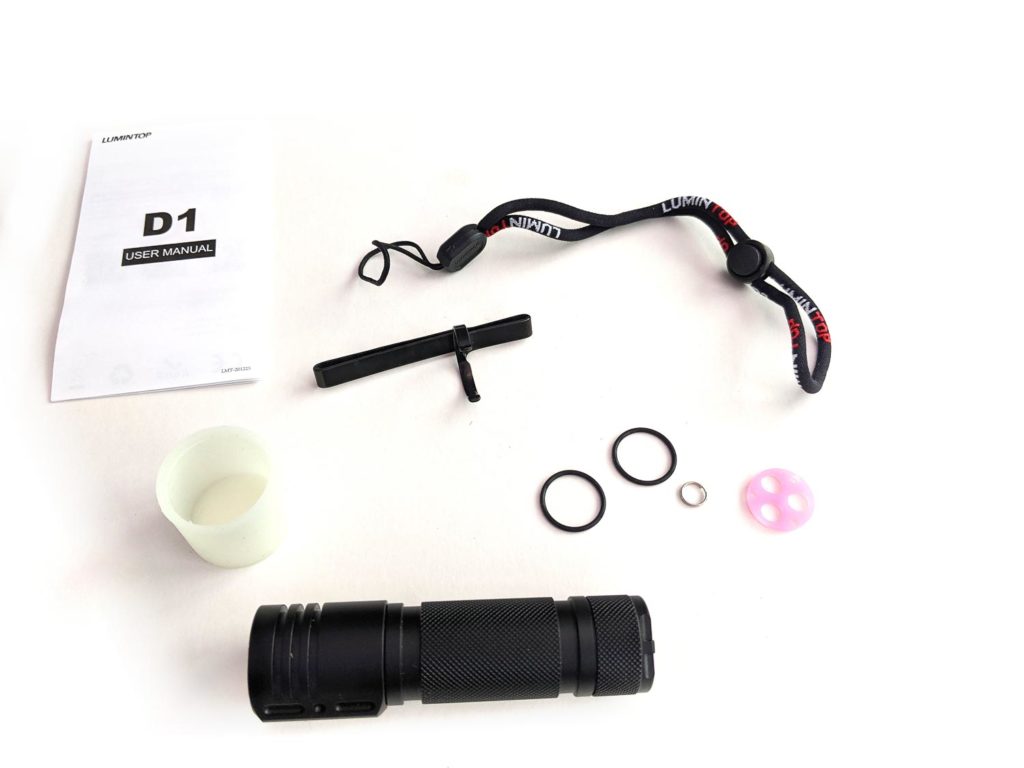
Flashlight in use
I really like 18650 lights with side switches and deep pocket clips. The Lumintop D1 has a great host shape.
The area around the switch sticks out, so it’s very easy to find the switch without looking. I carried the Lumintop D1 for a couple of days and the side switch didn’t turn on in my pocket. There’s no guarantees though, as the switch isn’t recessed. The shape of the head also stops it rolling around.
The D1 will tail stand fine, including with the clip and lanyard.
The pocket clip is 2-way, so you could use the D1 as a hat light. The clip looks reversible but sticks out if attached to the tail end.
The D1 doesn’t have a magnetic tail cap. The EDC18 and EDC18L both do though.
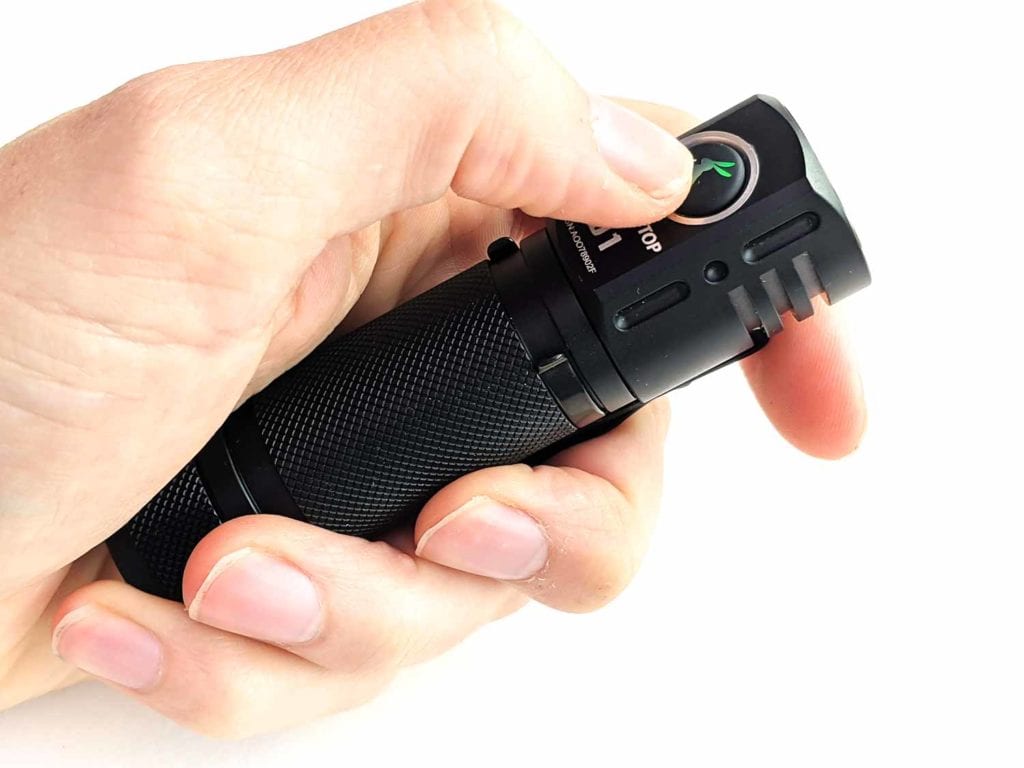
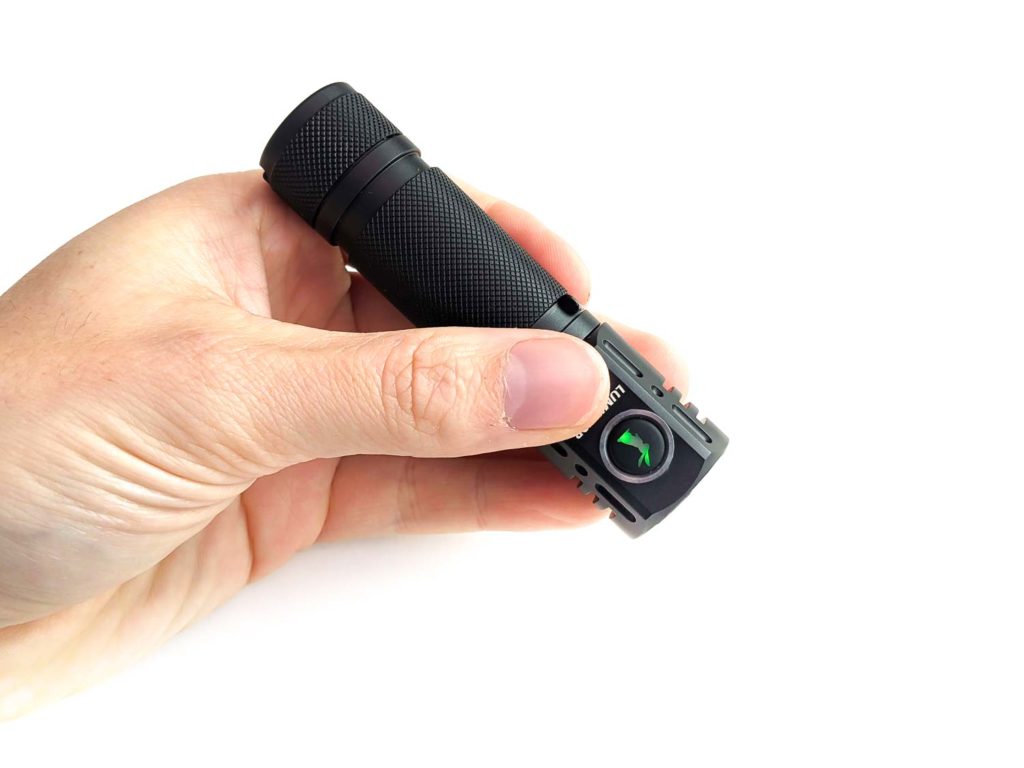
Build Quality, and Warranty
The D1 has slightly shiny anodization. This seems well done: I took the steel clip off and there don’t seem to be any marks.
The tailcap hole for the lanyard is sharp. This is in contrast to the rest of the host, which is bevelled and filleted smoothly.
There’s diamond knurling on the body and tail, though this isn’t very pronounced. The threads are anodised and square cut. They feel very smooth at both ends, though are a bit tight at the head end.
Lumintop have a “5 years free repair, limited lifetime warranty”.
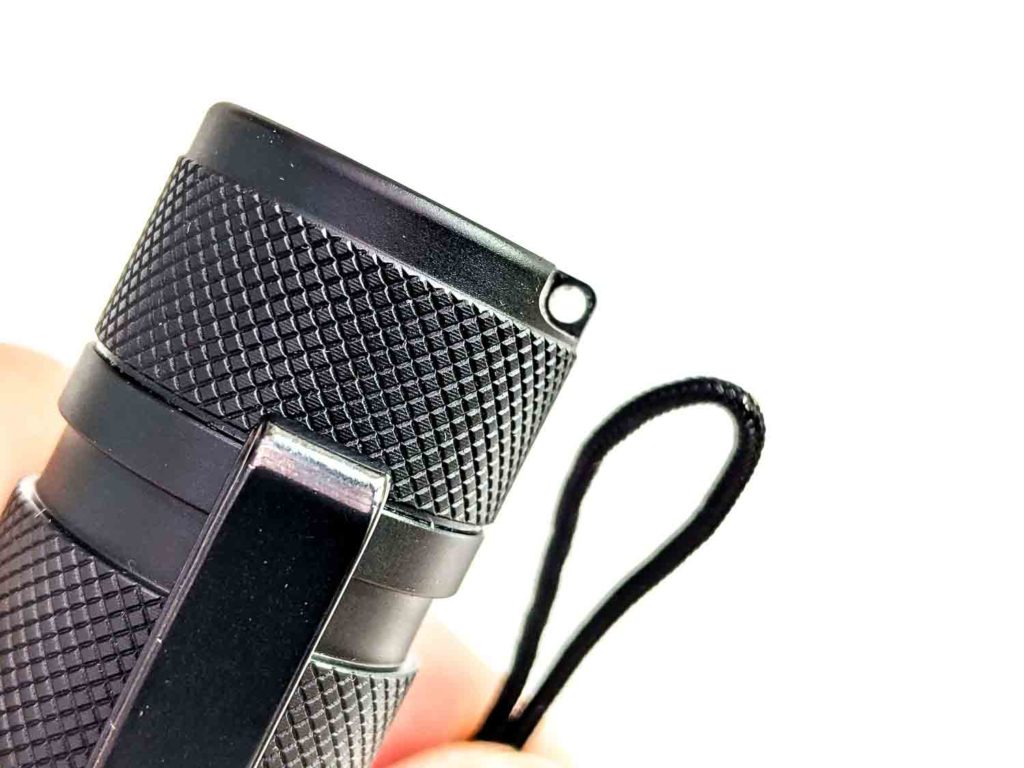
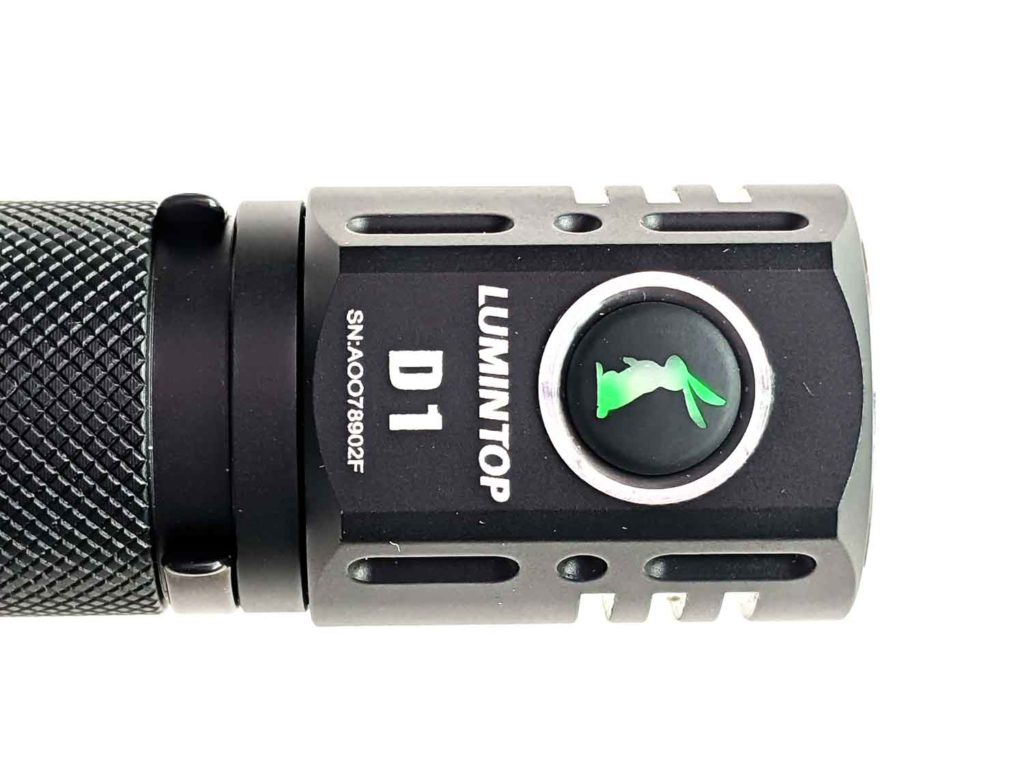
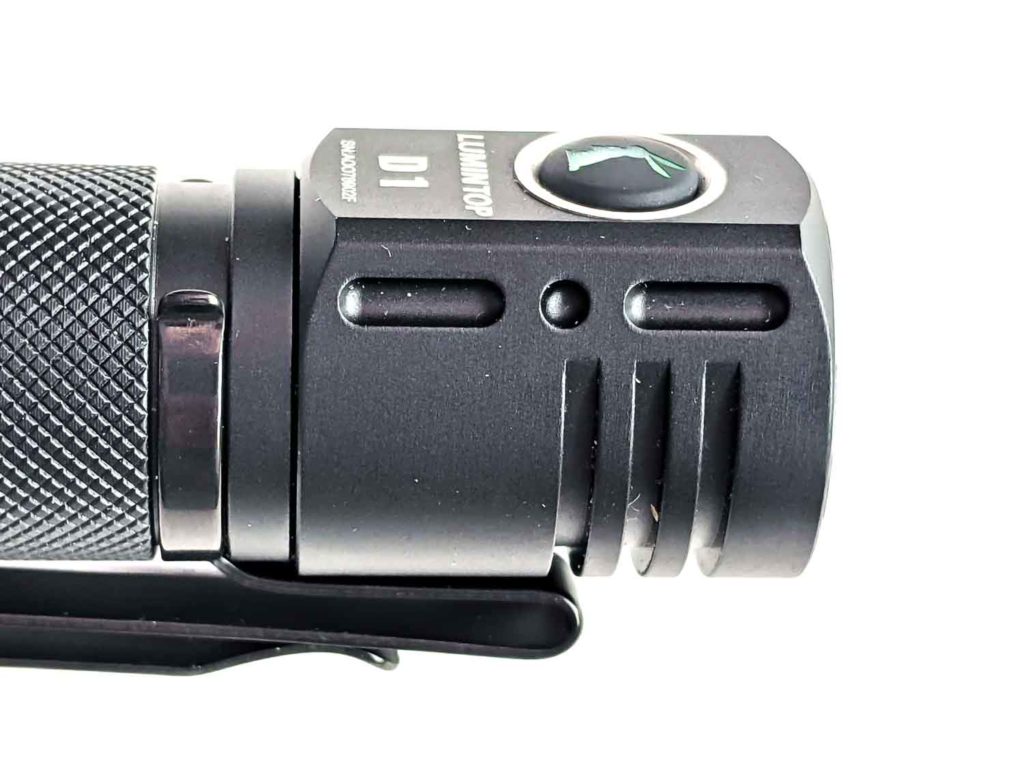

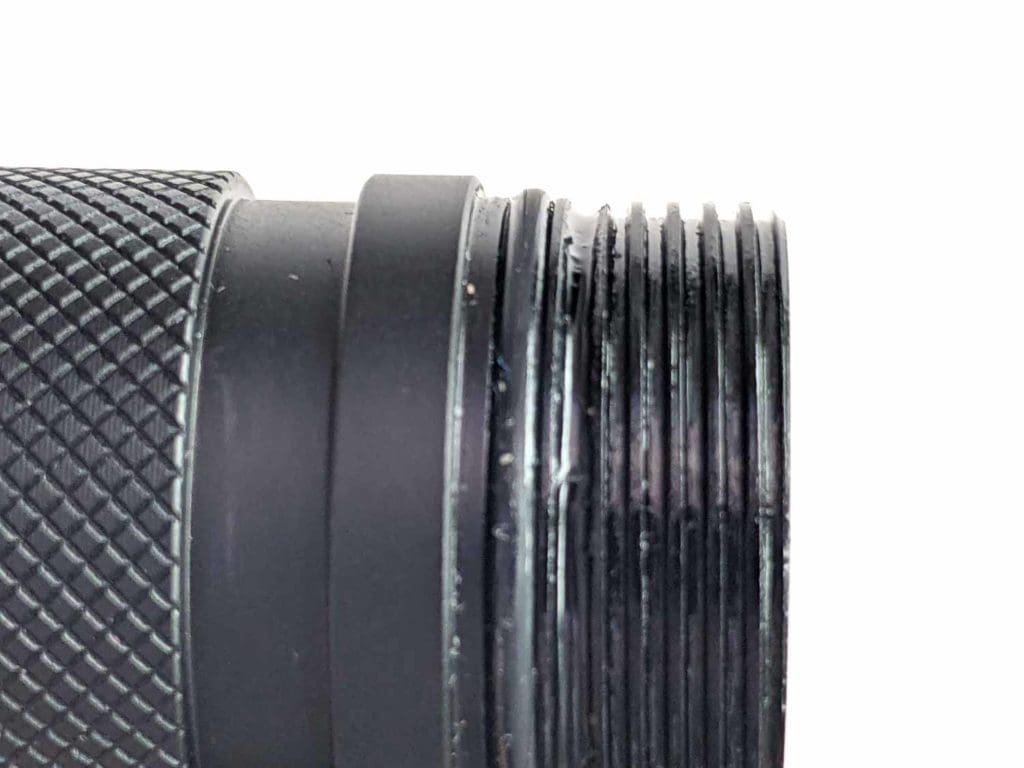
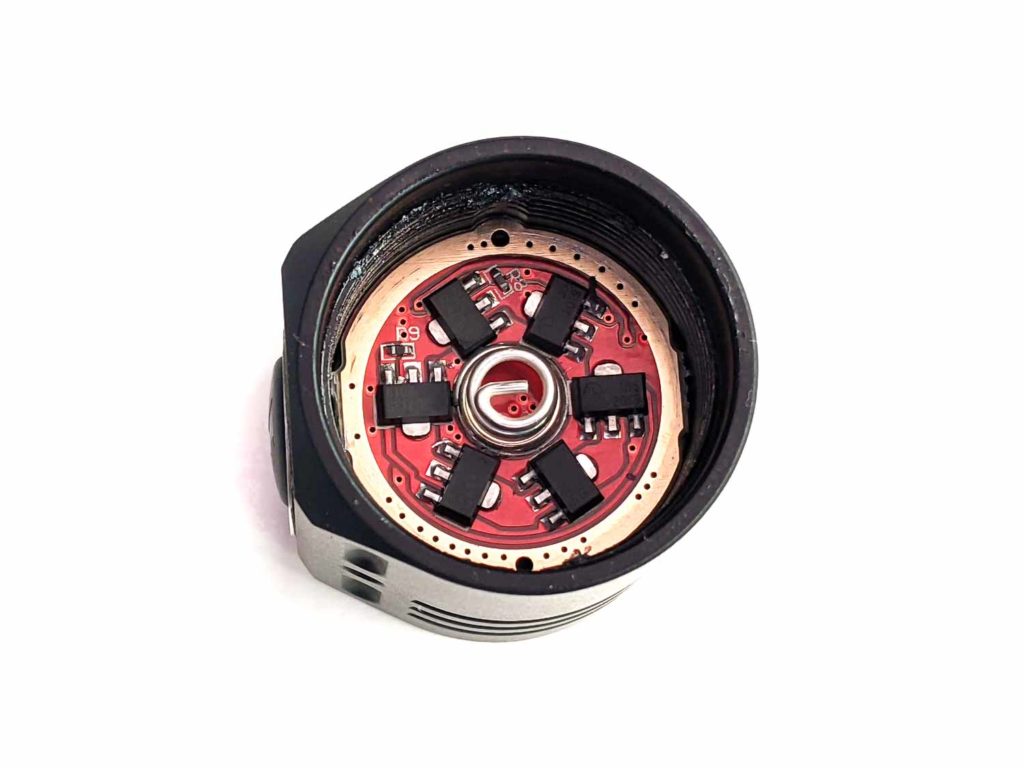
LED, Lens, Bezel, and Reflector
Starting at the top you’ll find the bezel. This is shiny steel but doesn’t really seem to affect the beam profile. Below the bezel is the plastic triple TIR optic. There’s no glass lens, which surprised me. The TIR results in floody light with a smooth transition from spot to spill. There’s slight artifacts in the beam but only when looking at a white wall and this is less pronounced than on my D4V2.
The inner diameter where the MCPCB goes is 21.1mm.
On to the 3 LEDs. Lumintop give you a few options here:
- XP-G3 (6500K)
- XPL-HI (4875K)
- Nichia 219C (4000K)
- Nichia 219C (3000K)
Aside from the colour temperature, the XP-L HI should be the brightest and have the most throw. The D1 seems to be the only way to get the warm Nichia LEDs. Though you can get the EDC18 with neutral white SST-20 LEDs.
I went for the 3000K Nichia LEDs – the warmest option – just for something different. The warm LED light is a lovely change from many of my other cool white flashlights.
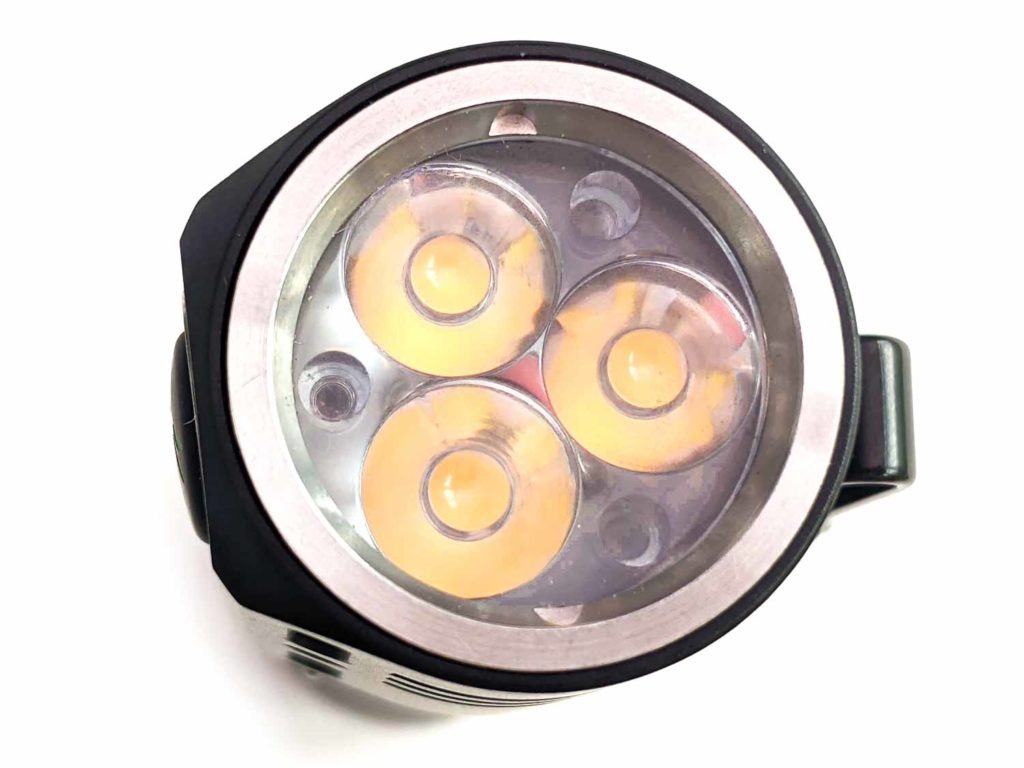
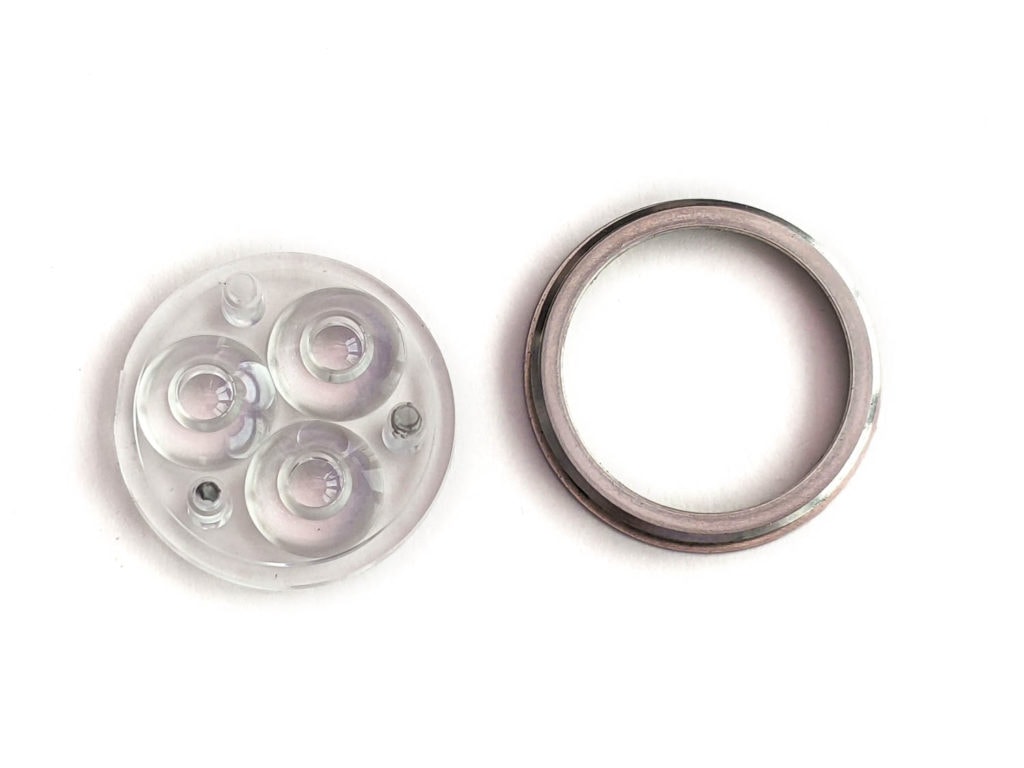
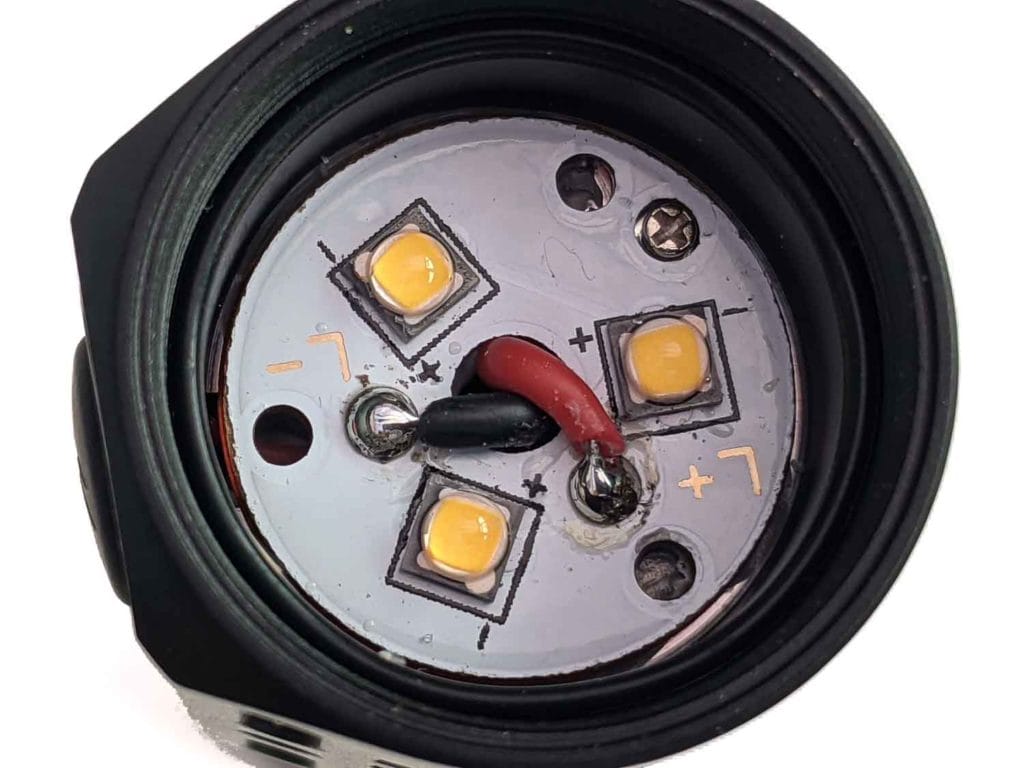

Dimensions and size comparison
- Length: 10.05 cm / 3.96 inches
- Head diameter: 2.89 cm / 1.14 inches (at the widest diagonal)
- Body diameter: 2.44 cm / 0.96 inches
Weight:
- Without cell: 76g / 2.7 oz
- With cells: 124g / 4.4 oz
EDC Flashlight size comparison
Size compared to other EDC flashlights. From left to right:
Image 1, from left to right:
- Manker MC13 (SBT90.2)
- Emsiar D4V2
- Lumintop D1
- Sofirn SP31 Pro
- Convoy S21B
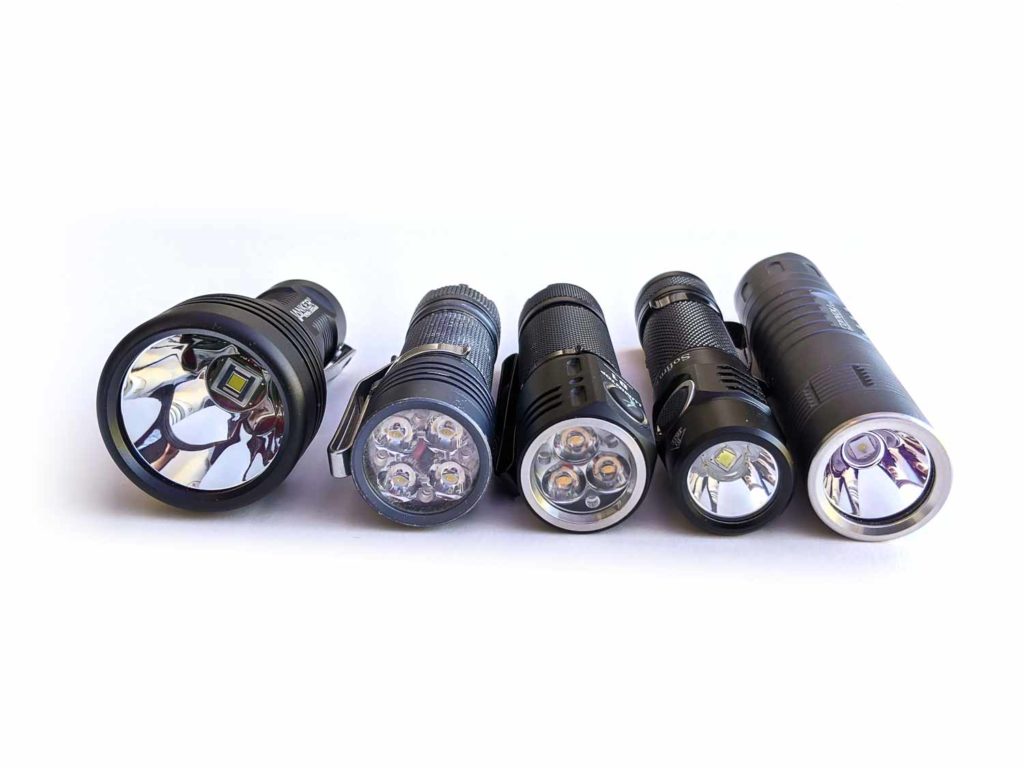
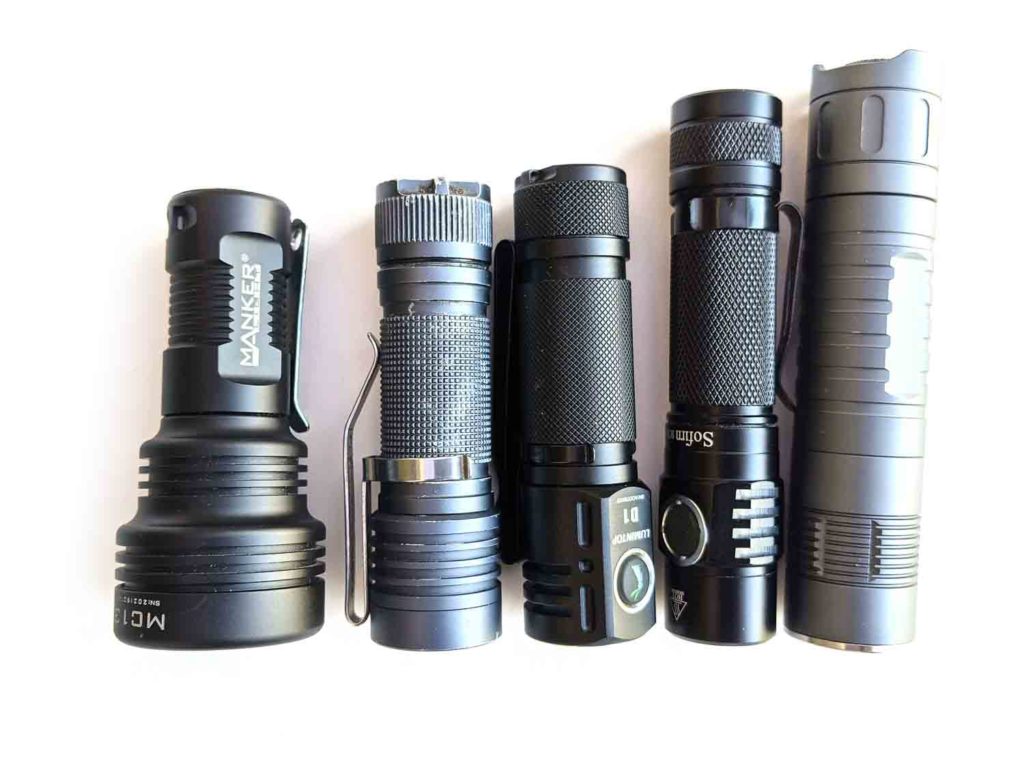
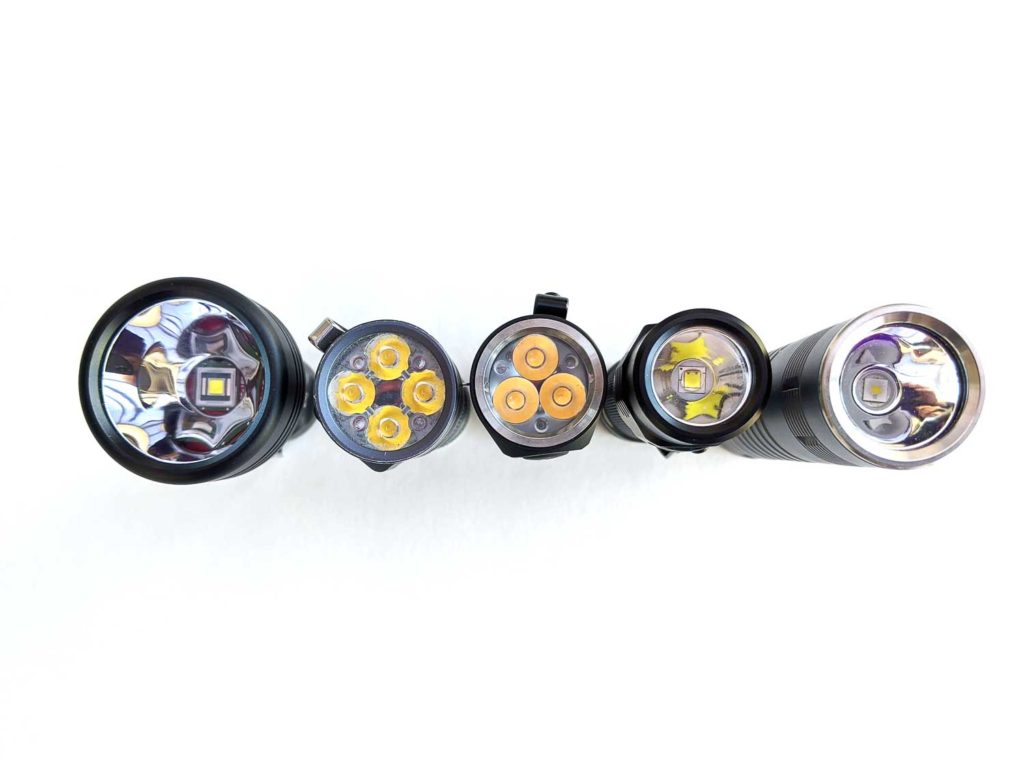
Driver & User Interface:
The UI is one of the main differences with the Anduril-powered EDC18. The Lumintop D1 has a similar UI as their Lumintop EDC01 and OD10. Unfortunately, that means hold for off.
The D1’s interface might take up less space in a printed manual but to me, it’s clunky and awkward to use. Without reading a manual you expect pressing a button to turn things on and off. If you give someone a D1 and ask them to turn it off then chances are they’ll make it brighter and then hand it back to you with a confused look on their face. I’m happy to put up with weird UIs for dedicated throwers or massive flashlights but this UI doesn’t cut it on an EDC for me.
The e-switch is lit up with the green Lumintop bunny. This makes it easy to find when the light is off. The indicator light is always on – whether the light is off or on. This is well under a lumen and I doubt it drains the cells much. You can always turn the tailcap a bit for physical lockout
In case you want to replace the driver, the inner diameter of the head is 23.7mm.
Modes: Moonlight, Low, Medium, High, Turbo
From OFF:
- Press and Hold: Moonlight
- Single-click: Mode memory (only low, medium or high)
- Double-click: High (not turbo)
From ON (low/medium/high):
- Press and Hold: Off
- Single-click: Next mode (Low, Medium, High)
- Double-click: Turbo
From moonlight:
- Press and Hold: Off
- Single-click: Mode memory (Low, Medium, High)
- Double-click: Turbo
From turbo:
- Press and Hold: Off
- Single click: Mode memory (Low, Medium, High)
Mode memory:
- Yes (low, medium and high)
PWM
- Only barely detectable with a camera on moonlight and low.
Batteries & Charging
Nothing special to report here. Thanks to the dual sprints, the Lumintop D1 will take either flat or button top 18650 cells – it even managed a 70.1mm button top with built-in charging.
The body tube is quite wide and the cells I used rattled inside. You might want to add plastic or paper as a spacer.
Performance
Lux meter: All lux and lumen measurements are from my home made integrating sphere, calibrated with a range of factory specced lights. Measurements are done with a UNI-T UT383S lux meter and Adafruit TSL2591 connected to a Raspberry Pi (using RuTiTe by bmengineer). Expect them to be within +/-10%.
DMM: Current readings were taken with a Precision Gold PG10B DMM, all with the cells fully charged.
Amp and lumen measurements
Note that this is with the 3000K Nichia 219B. Lumintop doesn’t say which LED the specs are for. My guess is either the 6500K CREE XP-G3 or 4875K CREE XP-L HI. The 3000K 219C has a significantly lower efficiency than the CREE LEDs. The numbers here are low but if you’re after a CREE LED version then I’d expect them to be much closer to the specs.
| Mode | Current (A) | Spec (lm) | Measured (lm) |
|---|---|---|---|
| Moonlight | 5.2 mA | 2 lm | 1 lm |
| Low | 107 mA | 50 lm | 30 lm |
| Medium | 1.41 A | 630 lm | 375 lm |
| High | 2.80A | 1000lm | 688 lm |
| Turbo (0s) | 4.19A | – | 1022 lm |
| Turbo (30s) | – | 2000 lm | 980 lm |
| Turbo (10m) | – | – | 352 lm |
Runtime graph
Here you can see some lovely regulated output – perhaps this is something the D1 does better than the EDC18.
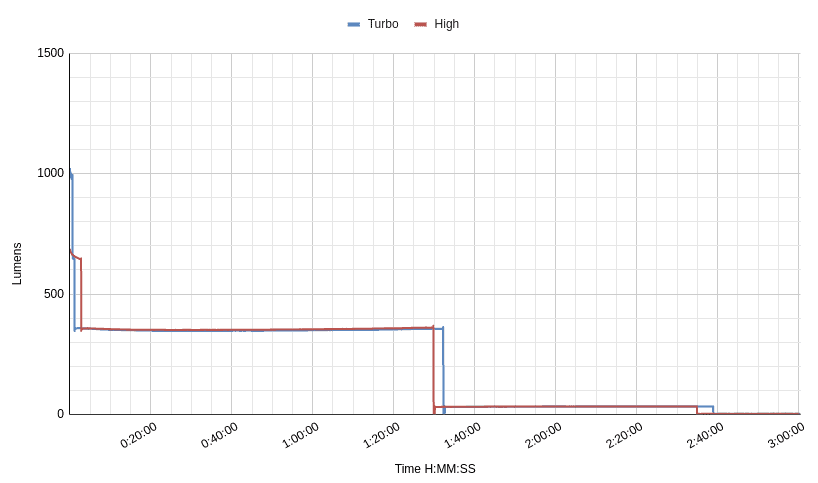
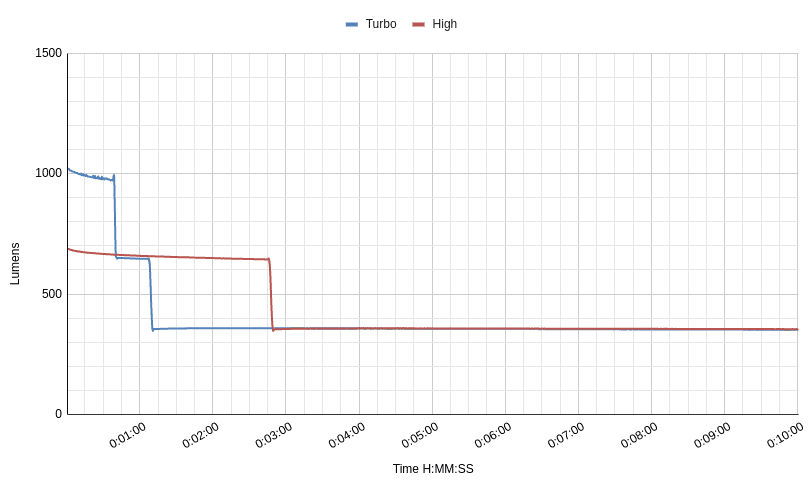
On turbo, the D1 starts off around 1000 lm and holds this for just over 30 seconds. It then steps down to the high level, which is around 650 lm. Turbo only sustains this for another 30 seconds until it drops down to the medium level around 350 lm. Once on medium, it sustains this level for an hour and a half, before dropping to low.
The high mode behaves in a similar way, though it manages to stay over 600 lumens for almost 3 minutes before stepping down to 350 lm.
The difference between 1000 lm and 600 lm is barely noticeable, so you may as well stick to the high mode, which doesn’t drop down so quickly.
Throw numbers:
| Mode | Specified | I measured |
|---|---|---|
| Low | – | 19m / 92 cd |
| Medium | – | 82m / 1675 cd |
| High | – | 109m / 2960 cd |
| Turbo (0s) | – | 129m / 4130 cd |
| Turbo (30s) | 180m / 8100 cd | 127m / 4015 cd |
The Lumintop D1’s beam profile is a fairly floody 4cd/lm.
Beamshots
Photos were taken with a Pixel 3a, set to 1/2s shutter speed and ISO 400, F1.8. White balance was locked on cool white.
Distance to the bench is 6m, tree on the right is 13m, tree on the centre right is 18m and the building behind it is 69m.
- Emisar D4V2 (4000K)
- Lumintop D1 (3000K)
- Lumintop Gift-G1 (5000K)
- Jetbeam EC26
- Lumintop FW4X
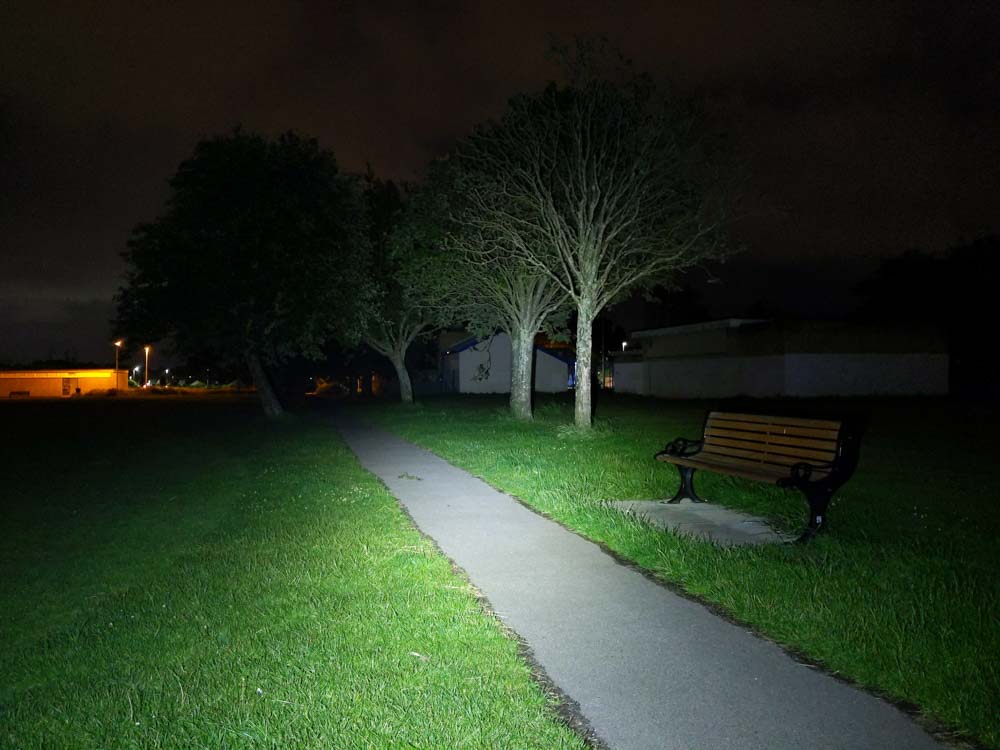
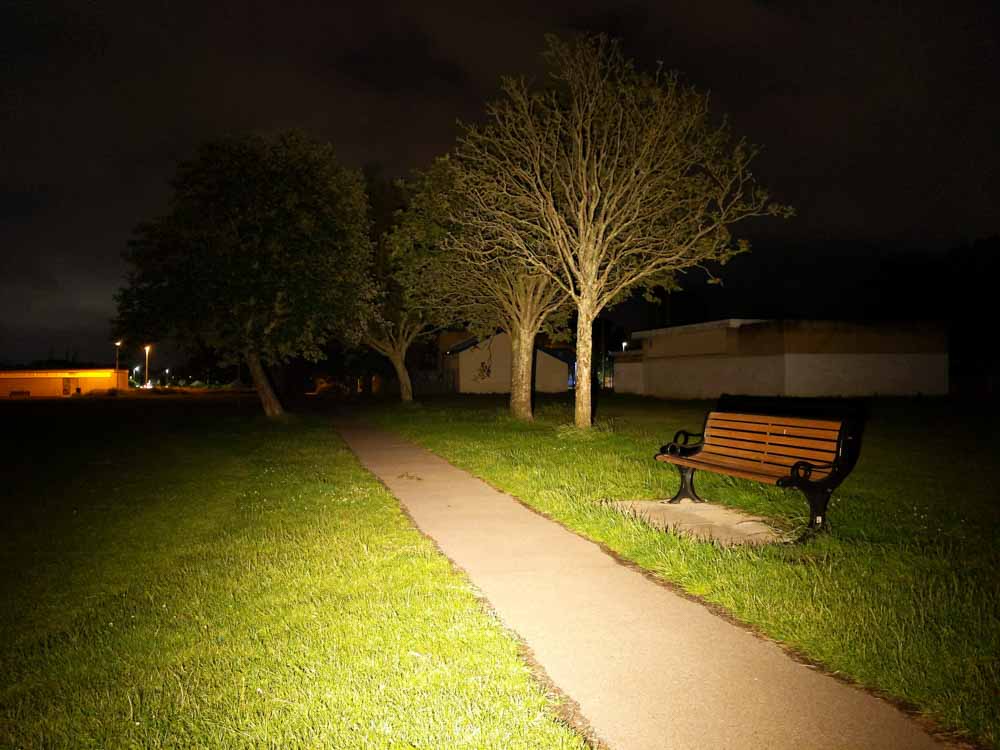
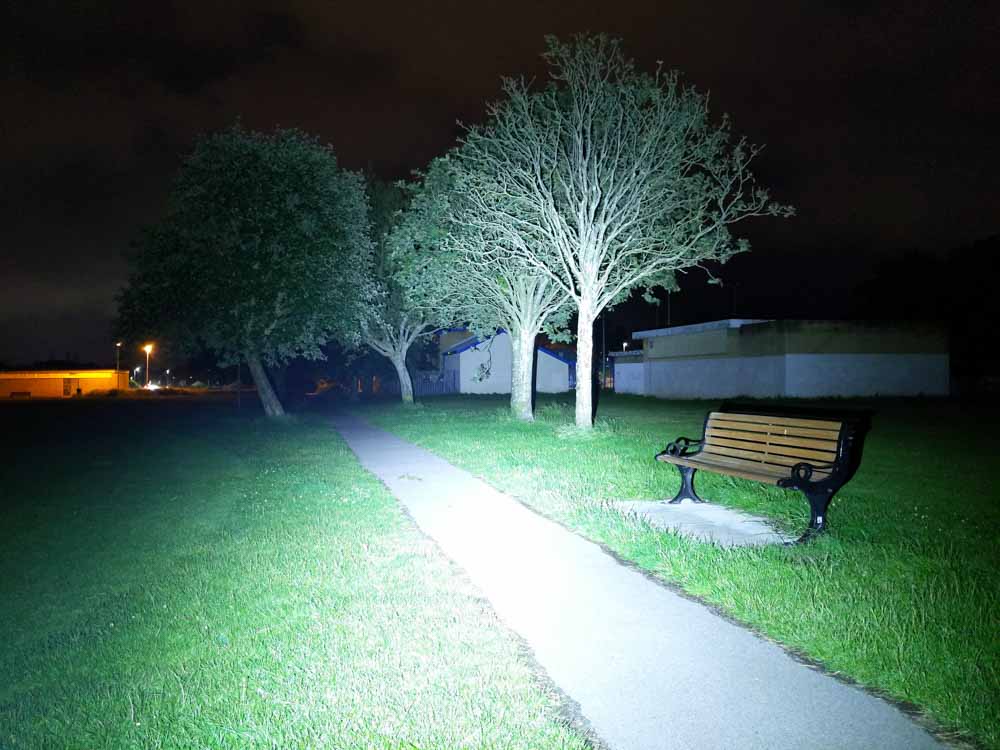
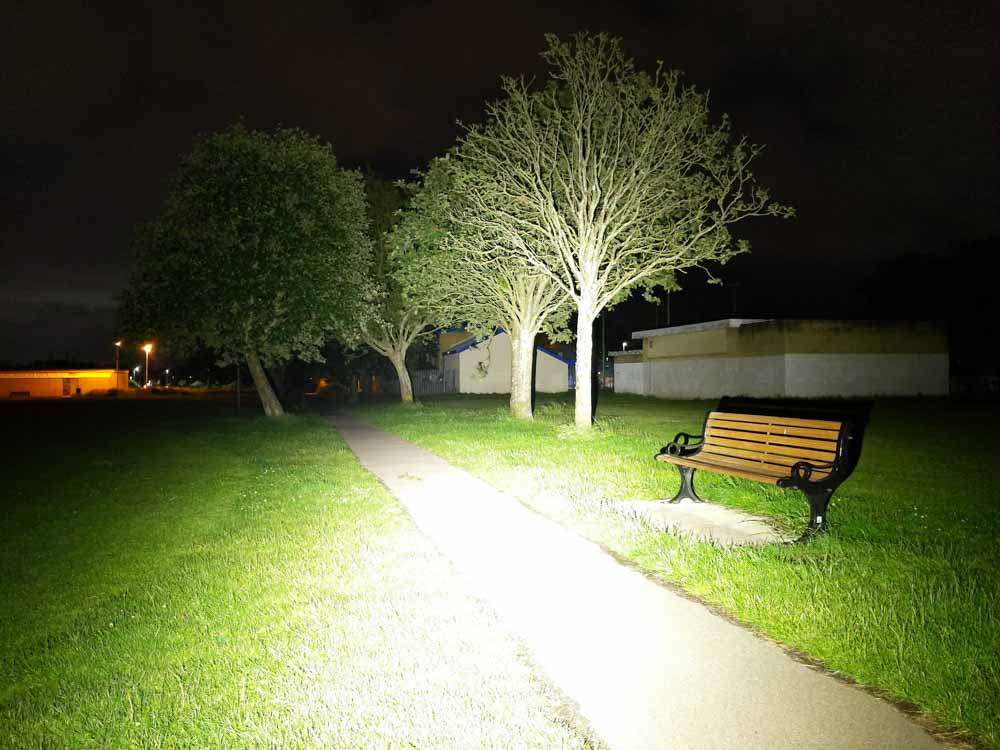

Disclaimer: This flashlight was sent to me for review at no cost by Lumintop. I have not been paid to review, nor have I been holding back on problems or defects.
Explanation on star ratings:
- – Avoid: my phone flashlight would be a better choice
- – Poor: significant defect or issues, much better options available at the same price
- – Average: some defects or issues
- – Good: recommended (minor issues)
- – Great: highly recommended
Final Verdict
Pros
- Wide choice of emitters, including warm white
- Good quality host
- Regulated output
Cons
- Awkward UI
- Cells rattle
- Mode spacing
- The EDC18 exists

3.5 stars: ★★★⋆
I’m going to be very honest here: my opinion is that you shouldn’t buy the D1. Instead, get the Lumintop EDC18.
The only reason to pick the D1 (which currently costs more) over the EDC18 is if you’re a warm white LED aficionado and want the option of the 3000K Nichia 219C LED. As one of my warmest lights, it’s still getting some use as an around the house light, where the 3000K is similar to household lighting.
If Lumintop were aiming at beginners with the D1 then I think they’ve missed the mark. In fact I’d wager that the EDC18 on Anduril’s “muggle mode” would be easier to use for a beginner. Anduril 2 (which Lumintop have just started using in the new Lumintop FWAA) defaults to a “simple mode”, which should work even better. If you are happy with push-to-turn-off on an EDC light then you’d probably like the D1.
Even if you do consider the D1’s UI beginner-friendly, selling a flashlight without a cell or an easy way to charge it is not very beginner-friendly.
If the EDC18 didn’t exist then the D1 would be an OK option with its clunky UI. Maybe it’d even get 4 stars from me. But as the almost identical EDC18 exists, I can’t recommend the Lumintop D1 at all and it gets 3.5 stars.
Lumintop D1 for sale
1lumen selects and reviews products personally. We may earn affiliate commissions through our links, which help support our testing.